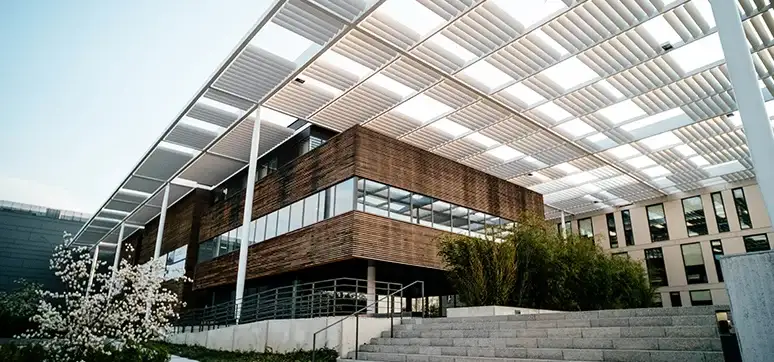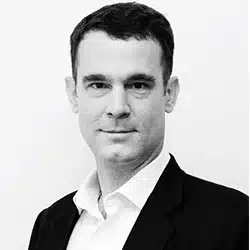What are the major trends in exterior wall cladding?
The major trends include a greater focus on whole lifecycle carbon assessment, as well as in the increased deployment of technology. The first aspect involves sourcing more local materials, which unfortunately isn’t always possible, using materials with high recycled contents, and materials or systems offering reduced operational carbon. The second aspect focuses on improved efficiency in design, reduced wastage, and improved integration between the design and manufacturing aspects.
What is the most preferable cladding material?
This is a vast topic that could elicit an entire article in itself. There are many factors to consider when designing a façade or selecting a cladding material, including structural, thermal, aesthetic, environmental, acoustic, cost, maintainability, durability, availability, logistics, and many other performance requirements when designing a façade, and they often contradict each other.
 The most preferable cladding material differs from region to region or climate to climate and is generally selected through a compromise between these various aspects. Unfortunately, the cost factor often dominates the others. However, with greater environmental awareness, some developers are taking a different approach and focusing more and more on the adoption of green building design principles, and the selection of sustainable façade systems, materials, and practices.
The most preferable cladding material differs from region to region or climate to climate and is generally selected through a compromise between these various aspects. Unfortunately, the cost factor often dominates the others. However, with greater environmental awareness, some developers are taking a different approach and focusing more and more on the adoption of green building design principles, and the selection of sustainable façade systems, materials, and practices.
What role does cladding play in constructing sustainable buildings?
A substantial proportion of the heating and cooling loads in buildings is derived from heat transfers through the façade. Optimising the façade design and material selection can greatly reduce the heating and cooling demand, and consequently the energy consumption of a building. Other than operational considerations, the raw materials used in the construction of the building envelope also impact its sustainability. There is also a more recent focus on the whole lifecycle assessment of building materials, with consideration of cradle-to-cradle design. This is a welcome change compared to the wild and uncontrolled earlier construction practices.
What is the role of cladding technologies & materials in regulating daylight and ventilation?
The building envelope represents the ultimate barrier between the inside and outside of the building. One of its main roles is to regulate the amount of natural daylight and heat entering the building. As explained below, allowing more natural light is not always the ideal approach. It really depends on the building’s location, purpose, and orientation. Similarly, the façade can contribute to regulate the ventilation of the building, either in place of or in supplement to mechanical ventilation systems. Some façade typologies involved hermetically sealed façade (although some controlled air leakage is always expected and designed for), fully open cladding (for naturally ventilated buildings), and everything in between.
Could you please brief us about intelligent & responsible cladding?
An intelligent cladding material or system responds to its environment to deliver optimal performance at all times and under all circumstances. This is the ideal definition, but in practice, this is not always possible, and the adaptability of the building envelope to external solicitations is only partial. Both passive and active systems are available today. Passive systems respond automatically to changing conditions, while active solutions require human or machine intervention to adapt to different environments.
What are smart cladding solutions & technologies?
Numerous smart cladding solutions exist today, ranging from BIPV (both opaque and clear) for energy generation, to intelligent systems that adapt to environmental conditions, such as movable shading devices or adaptable glazing (thermochromic or electrochromic glass, for instance), or glazing with integrated cold lighting systems. Overall, there are numerous solutions available on the market today to address the various challenges that façade designers continuously face.

However, there exist two major obstacles to their adoption. The first one is the absence of proven track records, with many designers or developers reluctant to adopt what they see as unproven solutions. The second and possibly greater obstacle is the price point. The cost of adopting these smart solutions is often very high, with unduly long returns on investment, ultimately making them unattractive to most developers. With increasing adoption, though, I am confident that these two challenges will be overcome, and that we will see more smart cladding systems and technologies deployed on future buildings.
Explain the role of ensuring safety and security through cladding, testing & certification.
Prototype testing involves the testing of façade systems to ensure that they meet design requirements, perform well, and are safe. Traditionally, prototype testing has included primarily air- and water-tightness as well as structural tests. More recently, there has been greater emphasis on testing façades for security and fire safety. Although these tests have been in existence for many years, they were earlier not commonly performed. With the rise in security concerns, blast testing of façades has become more commonplace in the past 10-15 years. Similarly, following a slew of building fires, often involving or exacerbated by the building envelope, some countries have started making large-scale fire testing of façades compulsory
What are the norms & standards in your region for façades & cladding in building envelopes?
We work on projects globally, so we have to adapt to the regulations prevailing in each country. Other than building regulations themselves, which are often fairly limited in their applicability to façades, we rely on the relevant AAMA and ASTM standards, British or EN standards, or where available, like in Singapore, Malaysia, or Australia, we conform to the local standards (SS, MS or AS/NZS). We need to follow the standards that are accepted or mandated in the country of the project. However, not all standards are equal or compatible with each other. The selection of appropriate standards requires a deep understanding of their strength, weaknesses, and differences.
 Brief on cladding materials for future façades.
Brief on cladding materials for future façades.
There is tremendous scope for the evolution of façades in the future. In some respect, façades have not fundamentally evolved in the past 20 or even 50 years. Most of the materials or systems used today were already in use half a century ago. Of course, there have been some incremental improvements in their performance, but the same basic materials (glass, steel, aluminium, concrete) are still used in building envelope construction now. However, with the push for increased sustainability and greater integration of technology, we are seeing a slow shift towards newer materials and systems, in particular smart or responsive façades. I believe that this trend will accelerate in the coming decades and that it will come to dominate the design of future façades.
Share your views on the use of glass in green buildings.
This is the subject of a vast controversy at the moment. Some advocate a drastic reduction of the amount of glass used in building envelopes, and a return to greater solidity and opacity. The premise of such a recommendation is that glass is inadequate as the building enclosure material in many geographies and climates. This is not necessarily the right approach, though. I would preach for a more balanced view. Glass is an essential part of the façade, as it provides a necessary visual connection with our environment. We could all live and work in sealed, insulated bunkers, but this would not make for a very pleasant daily experience. Instead, I would push for the adoption of a sensible window-to-wall ratio based on the building location and typology, and the selection of appropriate glass.
As a simple example, many building designers in the tropics are specifying glass with very high light transmission, which in part means inadequate thermal performance, and excessive natural light, causing glare, and the use of blinds to mitigate these two issues. If instead, they specified glass with much reduced light (VLT) and radiant heat transmission (SHGC), the performance of the façade would be greatly improved, negating the need to use blinds, maintaining outward views, and at the same time minimising heat load from the envelope. Ultimately, it is not about taking a drastic approach to design, but simply a balanced view of which materials and systems are considered appropriate.
How do you see the market for cladding materials in your region?
With the events that have affected global markets in recent years, the prices of many construction materials have been steadily going up, driving frantic “value engineering” (read “cost savings”) efforts from developers to fit construction costs within previously approved budgets. This unfortunately resulted in design compromises, particularly in building envelopes, which has had a negative impact on their appearance and performance. With costs now stabilising and forecast to go back down in the coming months, I can only hope that we are past this phase and that we will be able to revert to the pre-Covid situation, with greater emphasis on the design of sustainable façades and the use of environmentally-responsible cladding materials.














